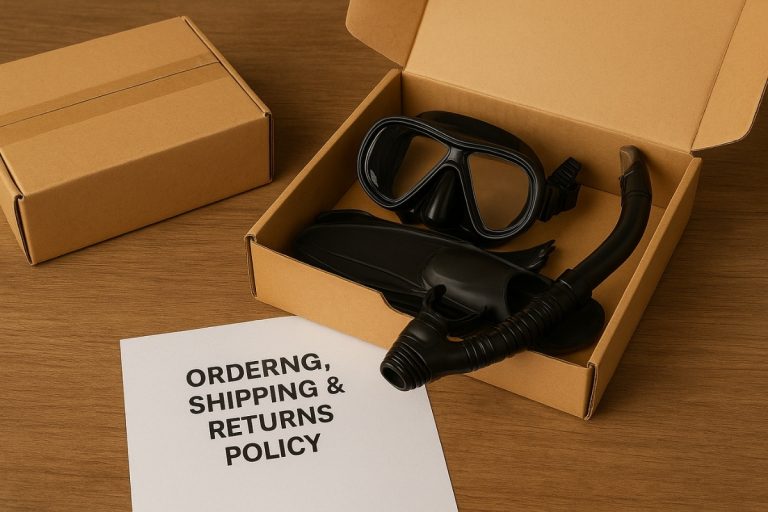- Overview of Store Locations & Hours
- Dynamic Features of Store Locator
- API Interactions for Store Services
- Health & Safety Updates for Store Locations
- Store Accessibility Features
- Store Customer Support Services
- Payment Methods Accepted
- Group & Wholesale Opportunities
- Frequently Asked Questions
- Enhancing Your Shopping Journey
Overview of Store Locations & Hours
Finding the right store location with convenient hours can make all the difference in your shopping experience. Modern retail chains have developed sophisticated systems to help customers locate nearby stores and access up-to-date information about operating hours, services, and special accommodations. Whether you’re planning a quick visit or need specific services, understanding how to access store locations and hours efficiently saves time and ensures you get the help you need.
The digital transformation of retail has made store information more accessible than ever. Most major retailers now offer comprehensive online tools that provide real-time data about their locations, including current hours, temporary closures, and special holiday schedules. These systems integrate with mapping services and mobile applications to create seamless experiences for customers on the go.
Understanding Store Locations
Store locations are strategically chosen based on customer demographics, accessibility, and market demand. Retailers analyze traffic patterns, population density, and competitor presence when selecting sites. This careful planning ensures that customers can find convenient locations whether they’re shopping from home, work, or while traveling. Many chains operate different store formats, from large flagship locations to smaller neighborhood stores, each designed to serve specific community needs.
Importance of Store Hours
Operating hours reflect both customer needs and operational efficiency. Standard business hours typically accommodate working professionals, while extended hours serve customers with varying schedules. Weekend and holiday hours often differ from weekday schedules, and seasonal adjustments may apply during busy shopping periods. Understanding these patterns helps customers plan visits when stores are less crowded and staff can provide better service.
Navigating the Store Locator
Most store locator tools feature intuitive search functions that accept zip codes, city names, or street addresses. Advanced filters allow users to search for specific services like pharmacy hours, automotive centers, or specialty departments. The search results typically display distance from your location, complete addresses, phone numbers, and direct links to individual store pages with detailed information.
Accessing Store Information
Each store listing provides comprehensive details including full addresses, phone numbers, parking information, and accessibility features. Many locations offer additional services like curbside pickup, in-store returns for online purchases, and specialized departments. Store-specific information may include manager contact details, department hours that differ from general store hours, and notifications about temporary service interruptions.
Tracking Store Performance
Modern retail systems monitor store performance through various metrics including customer satisfaction scores, wait times, and service quality indicators. This data helps improve operations and informs customers about expected service levels. Some retailers share performance insights through their store locator tools, helping customers choose locations known for excellent service or shorter wait times.
Dynamic Features of Store Locator
The technical infrastructure behind store locator systems involves sophisticated programming and real-time data management. These systems must handle thousands of simultaneous users while providing accurate, up-to-date information about hundreds or thousands of locations. The complexity increases when integrating features like inventory checking, appointment scheduling, and service availability.
Overview of JavaScript Functionality
Store locator applications rely heavily on JavaScript to create interactive maps, filter search results, and update information dynamically. These scripts handle user interactions, validate input data, and communicate with backend servers to retrieve current store information. The JavaScript framework ensures responsive performance across different devices and browsers while maintaining data accuracy.
Role of the ‘deepFreeze’ Function
The deepFreeze function serves a critical role in maintaining data integrity by recursively freezing objects to ensure immutability. This prevents accidental modifications to store configuration data, which could lead to incorrect information being displayed to customers. By implementing immutable data structures, the system maintains consistency across all user sessions and prevents conflicts when multiple users access the same information simultaneously.
Implementation of Global Configuration Flags
Global configuration flags enable or disable various features across the store locator system. These boolean switches control tracking capabilities, feature toggles, and third-party integrations. When set to true, these flags activate corresponding functionalities, allowing administrators to manage system behavior without code changes. This approach provides flexibility for testing new features, managing seasonal promotions, and responding to operational requirements.
Tracking Features in Store Locator
Advanced tracking capabilities monitor user interactions with the store locator, including search patterns, most requested locations, and conversion rates from searches to store visits. This data helps retailers understand customer behavior and optimize their store network. Privacy-compliant tracking ensures valuable insights while respecting user preferences and regulatory requirements.
Customer Feedback Integration
Integration with customer feedback systems allows real-time collection of store ratings and reviews. This feedback appears alongside store information, helping other customers make informed decisions about which locations to visit. The system aggregates feedback data to identify trends and areas for improvement across the store network.
API Interactions for Store Services
Behind every store locator lies a complex network of Application Programming Interfaces (APIs) that manage data flow between different systems. These APIs handle everything from basic store information to complex loyalty program integrations, ensuring that customers receive accurate, personalized information based on their account status and preferences.
Authentication API Overview
The authentication API manages user login processes and maintains session security throughout the store locator experience. This system verifies customer credentials, manages account permissions, and ensures that personalized features like saved locations and preferences remain secure. Multi-factor authentication options provide additional security for customers accessing sensitive account information through the store locator.
Loyalty Program API
Loyalty program integration allows customers to view point balances, available rewards, and location-specific promotions directly through the store locator. This API connects customer accounts with store-specific offers, showing which locations have the best deals for individual users. Real-time synchronization ensures that point balances and reward availability remain current across all touchpoints.
Shipment Tracking Services
Modern store locators integrate shipment tracking capabilities, allowing customers to monitor online orders destined for in-store pickup. This API provides real-time updates on order status, estimated arrival times, and pickup instructions. Customers can receive notifications when orders are ready and access detailed pickup procedures for their chosen location.
Performance Metrics API
The performance metrics API collects and analyzes data about store locator usage, search success rates, and customer satisfaction. This information helps retailers identify popular features, troubleshoot technical issues, and plan system improvements. Aggregated performance data supports business decisions about store hours, staffing levels, and service offerings.
Health & Safety Updates for Store Locations
Recent global events have heightened awareness of health and safety protocols in retail environments. Store locators now prominently feature health and safety information, helping customers make informed decisions about when and how to visit physical locations. These updates reflect changing customer expectations and regulatory requirements for safe shopping experiences.
Understanding current health and safety updates for dive centers and similar specialized retail environments helps customers prepare for their visits and ensures compliance with industry standards. Many diving equipment retailers have implemented enhanced cleaning protocols, modified store layouts, and adjusted service procedures to maintain safe shopping environments.
Importance of Health & Safety
Health and safety protocols protect both customers and employees while maintaining operational continuity. These measures include enhanced cleaning procedures, social distancing guidelines, and capacity limitations during peak periods. Clear communication about safety measures helps customers feel confident about visiting stores and encourages continued patronage during challenging times.
Current Health Guidelines
Current guidelines vary by location and may include mask requirements, capacity restrictions, and modified service procedures. Store locators display location-specific requirements, helping customers prepare appropriately for their visits. Regular updates ensure that information remains current as guidelines evolve and local conditions change.
Safety Measures in Stores
Physical safety measures include improved ventilation systems, sanitization stations, and modified checkout procedures. Many stores have implemented contactless payment options, curbside pickup services, and appointment-based shopping to reduce crowding. These measures demonstrate commitment to customer safety while maintaining service quality.
Updates on COVID-19 Policies
COVID-19 policies continue to evolve based on local health conditions and government guidance. Store locators provide current information about mask policies, capacity limits, and any temporary service modifications. Regular policy updates ensure customers have accurate information for planning their visits safely and efficiently.
Store Accessibility Features
Accessibility features ensure that all customers can comfortably visit and shop at retail locations regardless of physical abilities or special needs. Modern store design incorporates universal accessibility principles, while store locator systems highlight available accommodations to help customers choose locations that best meet their requirements.
Wheelchair Accessibility
Wheelchair accessibility includes barrier-free entrances, wide aisles, accessible restrooms, and appropriately positioned service counters. Store locators identify fully accessible locations and note any limitations that might affect wheelchair users. Parking information includes details about accessible spaces and their proximity to store entrances.
Hearing Impaired Services
Services for hearing-impaired customers include assistive listening devices, visual alert systems, and staff trained in basic sign language communication. Some locations offer written communication options and specialized customer service procedures. Store locators identify locations with enhanced hearing accessibility features and available support services.
Visual Impairment Services
Visual impairment accommodations include tactile guidance systems, large-print materials, and staff assistance for navigation and product selection. Some stores provide audio descriptions of products and services, while others offer personal shopping assistance. Clear pathways and consistent store layouts help visually impaired customers navigate independently.
Assistance for Elderly Customers
Elderly customer assistance includes comfortable seating areas, slower-paced service options, and staff trained to provide patient, respectful assistance. Some locations offer priority service hours or special shopping times designed for customers who need additional time or assistance. Store locators highlight locations with enhanced senior-friendly features and services.
Store Customer Support Services
Comprehensive customer support extends beyond basic transactions to include problem-solving, product education, and personalized assistance. Store locator systems help customers identify locations with specific support capabilities, ensuring they can access the level of service they need for their particular situation or purchase.
Customer Support Overview
Customer support encompasses various services including product returns, technical assistance, warranty claims, and general inquiries. Different store locations may specialize in particular types of support, with some offering extended technical services while others focus on quick transactions. Understanding available support options helps customers choose appropriate locations for their needs.
In-Store Assistance
In-store assistance includes personal shopping services, product demonstrations, and expert consultations. Knowledgeable staff can provide detailed product information, help with size or compatibility questions, and offer recommendations based on customer needs. Some locations offer appointment-based consultations for complex purchases or specialized equipment.
Online Support Options
Online support complements in-store services through chat functions, video consultations, and detailed product information databases. Customers can access support resources before visiting stores, making their in-person visits more efficient and productive. Integration between online and in-store systems ensures consistent service experiences across all channels.
Feedback Mechanisms
Multiple feedback channels allow customers to share experiences and suggestions about store services. These mechanisms include in-store surveys, online review systems, and direct communication with store management. Feedback data helps improve services and informs decisions about staffing, training, and operational procedures.
Payment Methods Accepted
Understanding accepted payment methods helps customers prepare for their purchases and choose stores that accommodate their preferred payment options. Modern retail environments support diverse payment preferences, from traditional cash and cards to digital wallets and specialized financing programs.
Payment methods and financing options vary by location and purchase type, with some stores offering extended financing for major purchases while others focus on quick, convenient transactions. Store locators often specify which payment options are available at each location, helping customers plan their visits accordingly.
Overview of Payment Methods
Standard payment methods include cash, credit cards, debit cards, and store-branded cards. Most locations accept major credit card networks and provide secure processing for all electronic transactions. Some stores offer additional options like checks, money orders, or gift cards, depending on local preferences and operational capabilities.
Financing Options Available
Financing options may include installment plans, promotional interest rates, and partnership programs with third-party lenders. These services help customers manage larger purchases while spreading costs over time. Store locators identify locations that offer financing services and provide information about application processes and approval requirements.
Digital Payment Solutions
Digital payment solutions include mobile wallets, contactless payments, and app-based transactions. These options provide convenience and security while reducing transaction times. Many stores now support multiple digital payment platforms, giving customers flexibility in how they complete their purchases.
International Payment Methods
International payment methods accommodate customers traveling from other countries or those who prefer foreign-issued cards. Some locations accept international credit cards, foreign currency, or specialized payment systems popular in other regions. This accommodation supports tourism and international business relationships.
Group & Wholesale Opportunities
Group and wholesale purchasing options provide significant value for organizations, clubs, and bulk buyers. Store locator systems help identify locations that specialize in group sales, offer wholesale pricing, or provide specialized services for large orders.
Group and wholesale inquiries require different processes and often involve specialized staff members who understand volume pricing, delivery logistics, and organizational purchasing requirements. Understanding these opportunities helps customers access better pricing and service levels for substantial purchases.
Overview of Group Discounts
Group discounts apply when multiple individuals coordinate purchases or when organizations buy in quantity. These programs may offer percentage discounts, bulk pricing tiers, or special promotional rates. Eligibility requirements vary but typically include minimum purchase amounts or group size requirements.
Wholesale Opportunities Explained
Wholesale opportunities serve businesses, resellers, and organizations that purchase products for resale or internal use. These programs often require business verification, minimum order quantities, and specialized pricing structures. Wholesale customers may access different product lines or receive priority service for large orders.
Inquiries Process for Groups
The group inquiry process typically involves contacting specialized sales representatives who can provide custom quotes and coordinate complex orders. This process may include needs assessment, pricing negotiations, and delivery planning. Group coordinators often receive dedicated support throughout the purchasing process.
Benefits of Group Purchases
Group purchase benefits extend beyond pricing to include coordinated delivery, specialized customer service, and customization options. Groups may access exclusive products, receive extended warranties, or benefit from consolidated billing and payment options. These advantages make group purchasing attractive for organizations with ongoing equipment needs.
Frequently Asked Questions
How can I find the nearest store location?
You can use the store locator tool by entering your zip code, city name, or street address to find the nearest store.
What should I do if the store hours change?
Store locator systems provide real-time updates on operating hours, including any temporary closures or holiday schedules.
Are there accessibility features available at stores?
Yes, many stores offer accessibility features such as wheelchair access, services for the hearing impaired, and assistance for elderly customers.
What payment methods are accepted at stores?
Accepted payment methods typically include cash, credit and debit cards, digital wallets, and sometimes international payment options.
How can I provide feedback about my shopping experience?
You can provide feedback through in-store surveys, online review systems, or by directly communicating with store management.
Enhancing Your Shopping Journey
Understanding store locations and hours, along with the various services and features available, empowers customers to make informed decisions that enhance their shopping experiences. By leveraging technology and being aware of health and safety guidelines, customers can enjoy a smooth and efficient visit to their chosen retail locations.




